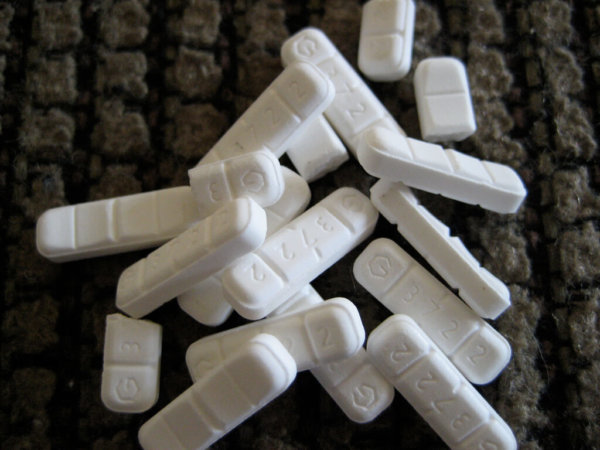
Benzo half-life as divided into three broad categories:
1. Ultra-short-acting benzos – The half-life of ultra-short-acting benzo is approximately 5 hours.
2. Short-acting and intermediate-acting benzos – The half-life of one of these benzos ranges from 5-24 hours.
3. Long-acting benzos – Long-acting benzos have half-life values of at least 24 hours or longer.
Results from drug tests that identify benzo exposure vary greatly depending on the type of test used. For example, tests that measure blood content will only detect benzo exposure for up to 3 days. Urine tests can identify benzos in the system for as long as six weeks, and hair tests can recognize the presence of benzos for as long as three months.
What Are Benzos?

Benzos are prescription medications indicated to treat anxiety or insomnia. The amount of time that a benzo remains in the body is dependent on several factors including the type of benzo (i.e., Xanax or Ativan), dose amount, method of administration, and individual factors such as sex, height/weight, and overall health.
To measure how long benzos stay a person’s system, we look at conditions known as peak level and half-life. Peak level refers to the point in which the drug is at its highest in the bloodstream. Half-life refers to the length of time needed for the body to metabolize and rid itself of half the dose.
Benzos are powerful sedatives (central nervous system depressants) prescribed by doctors for the treatment of anxiety, panic, social phobias, insomnia, and sometimes seizures.
They can also be used in a clinical reduce to resolve withdrawal symptoms related to the cessation of substance abuse such as alcoholism.
Some of the most commonly prescribed benzos include but are not limited to the following:
- Temazepam (Restoril)
- Triazolam (Halcion)
- Midazolam (Versed)
- Alprazolam (Xanax)
- Chlordiazepoxide (Librium)
- Clorazepate (Tranxene)
- Diazepam (Valium)
- Lorazepam (Ativan)
- Clonazepam (Klonopin)
Some of the most common side effects associated with benzodiazepines are:
- Sedation
- Dizziness
- Weakness
- Unsteadiness
- Drowsiness
- Depression
- Loss of orientation
- Headache
- Sleep disturbances
- Confusion
- Irritability
- Aggression
- Excitement
- Memory impairment
- Overdose
Benzodiazepines and Addiction
Benzos have a high potential for addiction to their actions on the brain’s reward system. Use affects GABA receptors in the brain and spinal cord. GABA is a chemical in the body that decreases activity/excitability in the central nervous system and can cause feelings of relaxation and drowsiness.
The extended or excessive use of benzos can result in a deficit of GABA receptors, a state that decreases the brain’s response to the drug and can lead to more excitability. At this point, the person has developed tolerance, a product of the brain’s “repeated use=diminished response” mechanism. An increase in tolerance then forces the person to use more and more of the drug to achieve the desired effects.
Dependence is another key component of addiction that develops over time with long-term or excessive use. Dependence occurs when the brain becomes accustomed to the presence of the drug and cannot function normally when the person using quits or drastically cuts back. This condition can result in unpleasant effects, called withdrawal symptoms.
Withdrawal symptoms related to benzo use include the following:
- Drowsiness
- Confusion
- Difficulty breathing
- Blurry vision
- Amnesia
- Weakness
- Impaired judgment
- Anxiety
- Insomnia
- Headaches
- Panic attacks
- Body shakes and sweating
- Seizures
- Hallucinations or delusions
- Psychosis
Benzo Overdose
The use of benzodiazepines is especially risky when combined with other potent depressants such as opioids and alcohol. Signs of an overdose include the following:
- Trouble breathing
- Respiratory arrest
- Bluish fingernails and lips
- Confusion and disorientation
- Extreme dizziness
- Blurred or double vision
- Weakness and tremors
- Uncoordinated movements
- Altered mental status
- Unconsciousness
- Unresponsiveness
- Coma
Treatment for Benzo Addiction

Benzo addiction is a serious condition that results in many adverse life consequences beyond health problems. These include legal and financial issues, interpersonal conflict, and the neglect of important or once-enjoyable activities. Treatment for benzo addiction begins with medical detox, a process in which the patient is supervised around-the-clock for complications while the body rids itself of toxins.
Following this process, patients are encouraged to enroll at our center. We offer both partial hospitalization and intensive outpatient treatment (IOP), which can be beneficial for those who need more flexibility to attend to important personal responsibilities such as work and family.
Also, inpatients often transfer to IOP to continue recovery and take advantage of support while in the transition back to the outside world. Outpatients can choose to live in a private residence or in an approved sober living home and receive transportation to and from the center if needed.
Because recovery is a lifelong process, we offer aftercare planning to help people find support and services (i.e., support groups and counseling) after discharge from treatment at our center. In addition, we encourage engagement in our alumni activities which also foster long-term support.